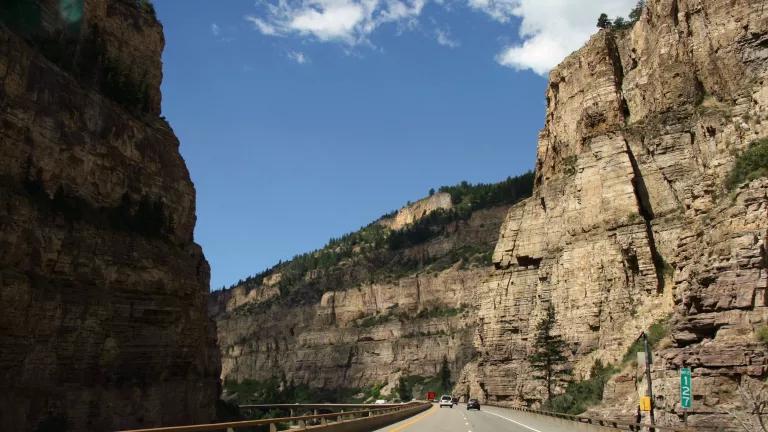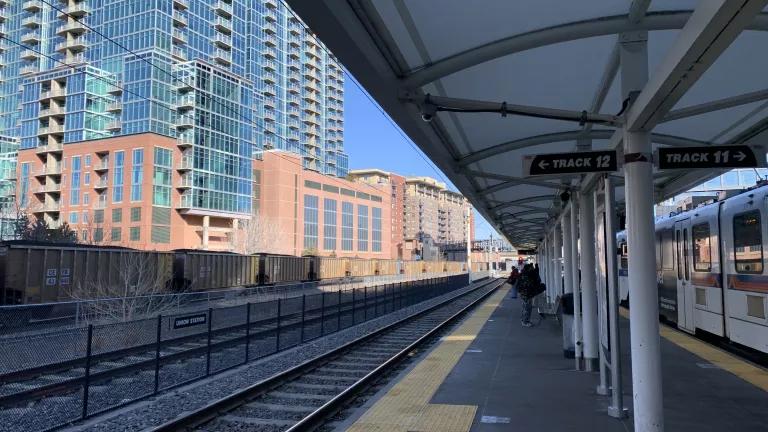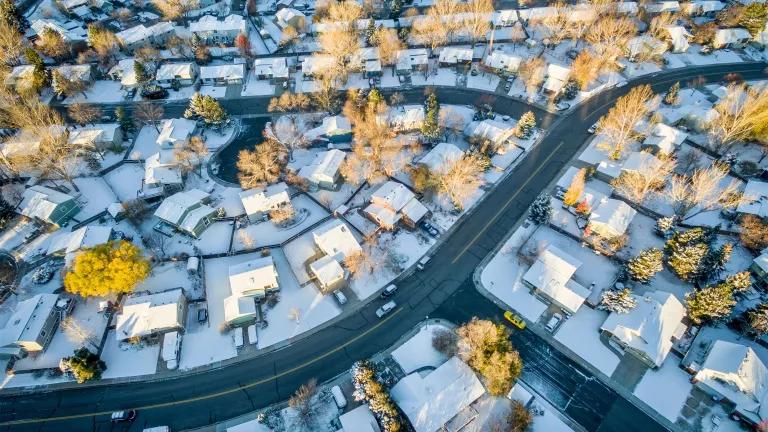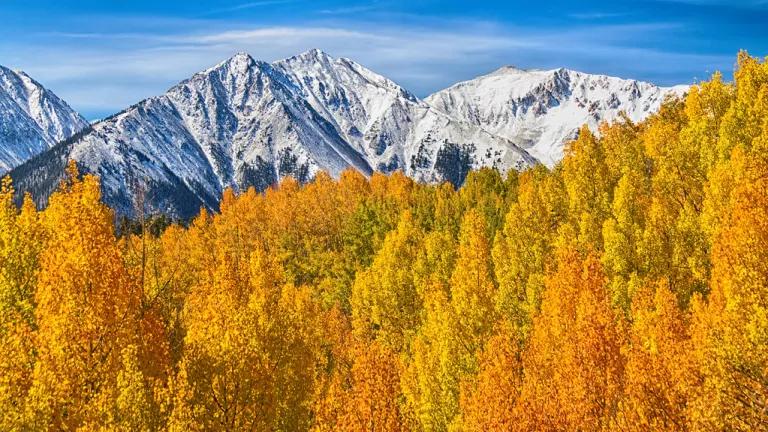Why Coloradans Must Defend NEPA
The Trump administration is trying to undermine NEPA by exempting many government-approved and funded projects from the review process and excluding consideration of the cumulative impacts, which is especially important when considering how projects will influence and be influenced by climate change.

I-70 through Glenwood Canyon
What is NEPA?
The National Environmental Policy Act (NEPA) guarantees communities the opportunity to understand and voice concerns about the impacts of proposed projects. When the government wants to build a new highway, power plant, dam or other major project, they must inform the public about how the project will impact public health and the environment as well as consider how climate change will impact the proposed infrastructure in the years ahead. From protecting public health and the environment to defending historical sites, endangered species, and public lands, NEPA gives our communities the tools they need to provide a critical oversight role.
How is the Trump administration undermining NEPA?
The Trump administration is trying to undermine NEPA by exempting many government-approved and funded projects from the review process and excluding consideration of the cumulative impacts, which is especially important when considering how projects will influence and be influenced by climate change. Under the proposed new rules, hugely consequential fossil fuel projects such as the Dakota Access pipeline could be given a pass while roads, bridges, and other infrastructure projects would no longer need to consider how the long-term consequences of climate change, such as rising sea levels, would impact them.
How does NEPA impact Coloradans?
Through the NEPA review process, Coloradans have voiced their opinions on a wide range of projects in the state, asking critical questions about impacts on air pollution, outdoor recreation, the Colorado river, cultural artifacts, and more. Here are some examples of how Coloradans have engaged in the NEPA process firsthand:
- I-70 Mountain Corridor: The Colorado Department of Transportation (CDOT) engaged Coloradans in a NEPA review process to develop a plan addressing congestion on the I-70 Mountain Corridor, an essential thoroughfare running from Denver to Glenwood Springs. The final plan, developed in collaboration with key stakeholders, was better for public safety and the environment than the initial draft, which would have required blasting through a cliff, building retaining walls, and channeling the Colorado River.
- North Fork Valley: When the Bureau of Land Management (BLM) announced intention to lease 30,000 acres of public and private land in Colorado's North Fork Valley for oil and gas development, a diverse coalition of stakeholders used NEPA to express their concerns about the impacts of the plan on local orchards, vineyards, farms, and tourism. After the review process, BLM postponed the leases.
- Canyons of the Ancients National Monument: When the BLM proposed a new seismic exploration project on land included in the Canyons of the Ancients National Monument, which includes 6,000 archeological sites reflecting Ancestral Pueblan and other Native American cultures, a coalition of local groups used NEPA to reach a compromise. The resulting agreement allowed BLM to collect seismic information they needed without threatening culturally significant sites and delicate habitats.
- State Highway 9: The Federal Highway Administration and CDOT used NEPA to minimize harmful environmental impacts when improving safety and mobility on a 9-mile stretch of State Highway 9. The final project saved money, improved safety through wider shoulders for cyclists and bus priority signals, and addressed environmental concerns by minimizing wetland impacts, dust emissions, tree removal, and wildlife damage.
- Grand Mesa, Uncompahgre, and Gunnison National Forests: Due to the NEPA review process, the United States Forest Service (USFS) released an environmental impact statement for its plan to clearcut aspen groves in Western Colorado to supply a waferboard plant. When the public expressed their concerns about impacts on wildlife, habitat, and other benefits of the forests to the region, the USFS scaled back the proposal in substantial ways that protected thousands of acres of forests.
How can Coloradans protect NEPA from the Trump administration’s rollbacks?
There are lots of ways for Coloradans, and anyone concerned about these rollbacks, to get involved:
- Learn more about NEPA: https://www.nrdc.org/resources/never-eliminate-public-advice-nepa-success-stories
- Learn more about the proposed rule change
- Discuss the rollbacks with your family, friends, and community
- Post about NEPA rollbacks on social media to educate your networks
If you live near Denver, please join us at an upcoming NEPA hearing on Tuesday, February 11th, 2020. The hearing is a great opportunity to voice your opinion on why protecting NEPA is important to you. Details on participating in the hearing can be found here. [As of posting, all hearing slots are filled, but keep checking back in the event they open additional slots.]
Even if you aren’t able to testify in person you can still join NRDC and coalition partners at Noon on Tuesday, February 11 at the “Rally to Protect NEPA” across the street from the hearing. You can learn more and RSVP for the rally on our event page.




